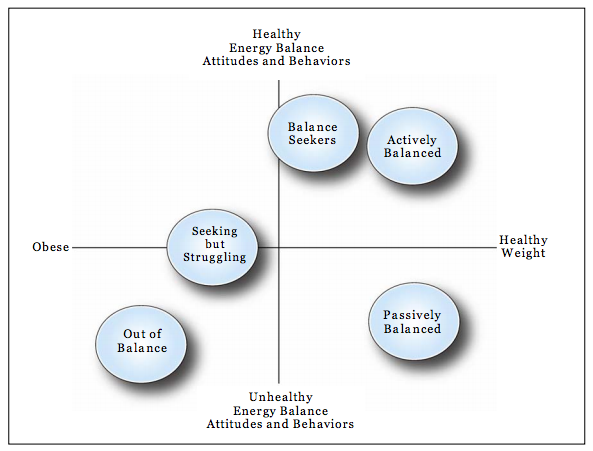Audience Segmentation For Conversion Optimization

"Segmentation is saying something to somebody instead of saying nothing to everybody." - Jay Conrad Levinson
Content creation, search optimization, paid advertising and social strategy all rely on extensive and well-planned audience segmentation to effectively drive conversions. With a thorough understanding of the needs and pain points of their unique audience segments, brands can develop more targeted and focused campaigns to reach and engage users on a personal level.
Understand Your Audience Today
When defining your audience segments, it is important to start by analyzing your historical data to understand the trends of your current audience. This data can help you understand your brand's current audience segments, how to engage with focused content, and the obstacles and opportunities faced with current targeting objectives.
Look for patterns in user behavior to identify what content and tone tends to provoke the highest levels of engagement. Examine your website analytics and social reports to discover demographic and behavioral data such as top content, landing/exit pages, referral sources, top selling products and behavior by user age and location. Analyzing purchase behavior can provide additional insight into what segments are more likely to move through the customer lifecycle and what offerings different groups of users are interested in.
Examine Your Marketing Goals
With an understanding of how your customers behave today and the general attributes that define each segment, your brand should evaluate its businesses goals to ensure that they are aligned with audience targeting. By evaluating user trends in conjunction with your marketing goals, marketers must ask themselves who they want as their audience. Perhaps it's time to stop targeting a group that isn't very engaged or go after a new demographic to explore opportunities with your brand's new service offering or branding initiative. Attribute your marketing goals to audience segments to ensure your resources are being fully utilized and targeted to engaged users that drive conversions.
Defining Audience Segments
The best way to understand your audience segments is to create personas, which can paint a clear picture of the needs, pain points and behaviors of individual audiences. Leverage your current customer base and industry data to discover what demographic and behavioral traits define your ideal target audience segments. Start by creating a list of reasons why consumers may want your service. Ask yourself, what needs do my brand's offerings fulfill? Group similar concepts and use these parameters to differentiate your unique groups. Repeat this process for pain points, device usage, content engagement, social activity, etc., to develop a more complete understanding of each target segment.
Tools like Forrester's Social Technographic Profile Generator help marketers further understand the behaviors of different demographics by classifying consumers into seven overlapping levels of social technology participation. Often, presenting this data alongside a user's picture and backstory can help your team understand and better relate to a persona. Plot your audience segments on a graph with relevant X- and Y-axes to create a visual understanding of what differentiates groups and which segments offer the biggest opportunities.

With your personas developed, set measurable goals to track engagement rates within each segment. Develop customized marketing plans that appeal to the interests and behaviors of each segment to get the most from your marketing resources.
Creating Targeted Experiences
Utilize your knowledge of targeted consumers to create campaign strategies that fit the needs and behaviors of each group. Identify the content, marketing channels, and tone the drives the most engagement and replicate it throughout your segmented campaigns. You may find that one segment prefers to see imagery delivered through social channels while another may prefer written content sent to them directly via newsletters or your blog. Experiment with different delivery methods and content mediums to find the right mix to initiate action.
Landing pages should be a major component to your segmented content delivery marketing strategy. Companies with 30 or more landing pages generate 7x more leads than those with fewer than 10. By creating custom landing pages with unique calls to action to use in paid advertising, social campaigns, and organic search, your brand can create more powerful connections that stimulate action. A/B test landing pages within segmented campaigns to compare data and develop confidence in your marketing strategy. Test different imagery, text, calls to action, and design features to discover what content keeps users most engaged.
Analyzing Segmentation Data
To properly gauge the success and opportunities of segmentation strategies, marketers must closely monitor and review data. Keeping a close eye on the data can uncover trends in user behavior that can influence how you adjust your marketing resources and audience targeting to drive more leads. Track data with website analytics platforms and utilize click-tracking software like Crazy Egg to generate visual heat maps of how users interact with your web pages. With A/B testing, marketers are able to determine what specific content or design elements can influence engagement and conversions.
By monitoring users through a complete lifecycle you may find that some audience segments are more likely to convert than others. Analyze this data with your team to determine what target audiences offer the most ROI for your brand and adjust your marketing strategies accordingly.
The Individualized Appeal
Audience segmentation is the best way to generate results from your marketing campaigns. By understanding the needs, interests and behaviors of your different users, brands can deliver more relevant content that pulls users through the sales cycle. Do your research to determine your audience characteristics and closely monitor data to define the best way to appeal to individual audience segments and drive sales.
Subscribe to Our Newsletter!
Latest in Marketing








